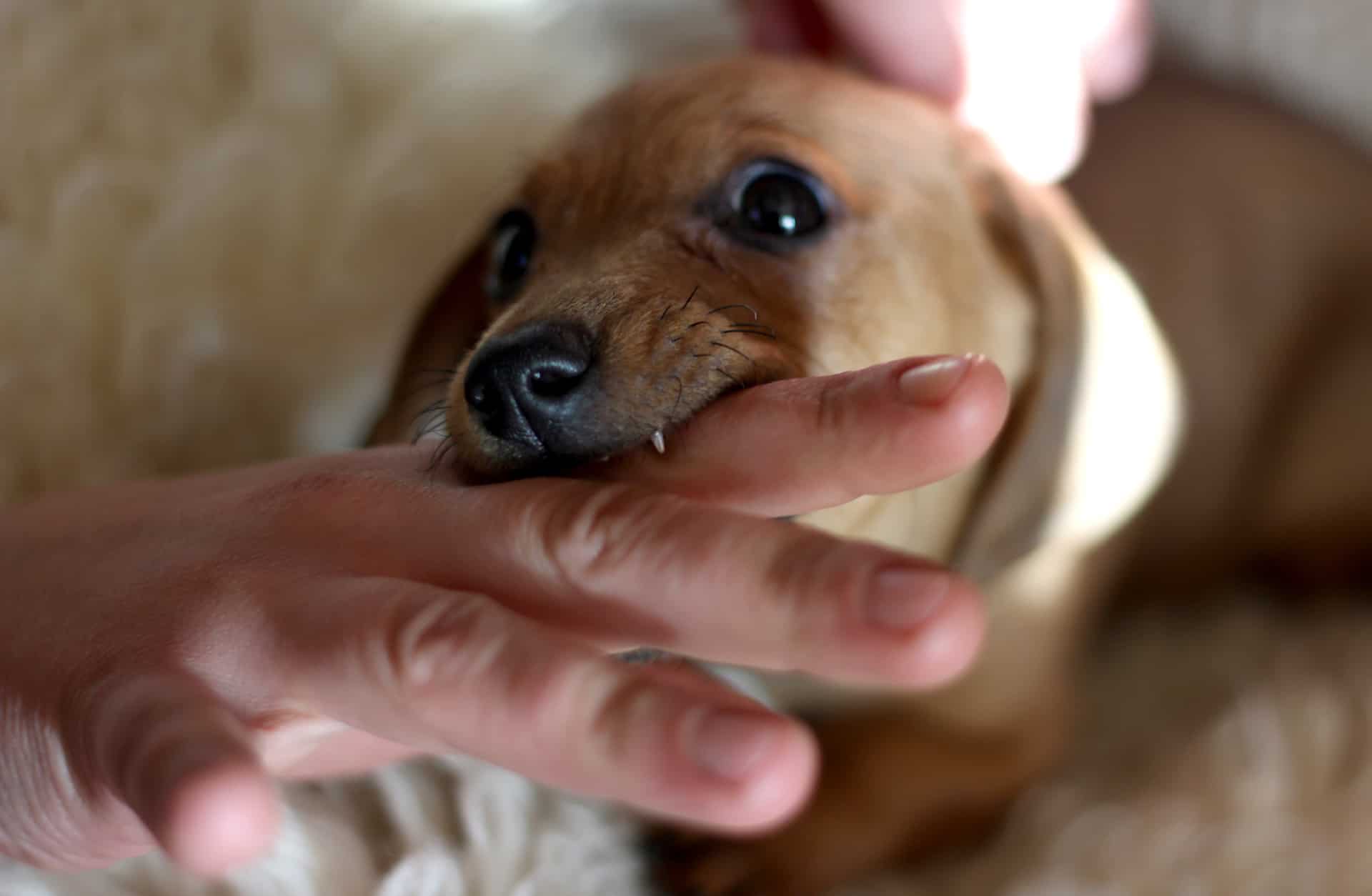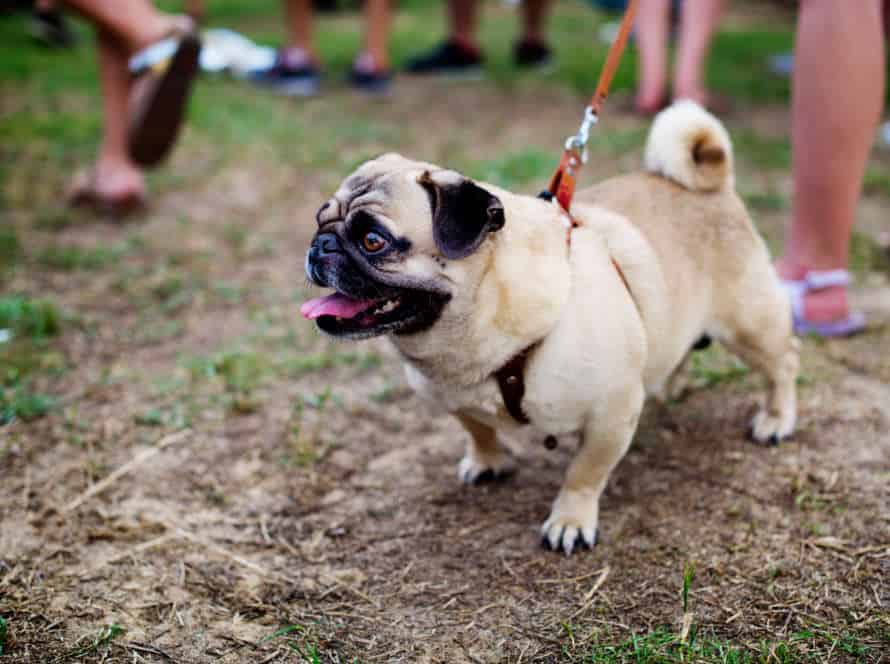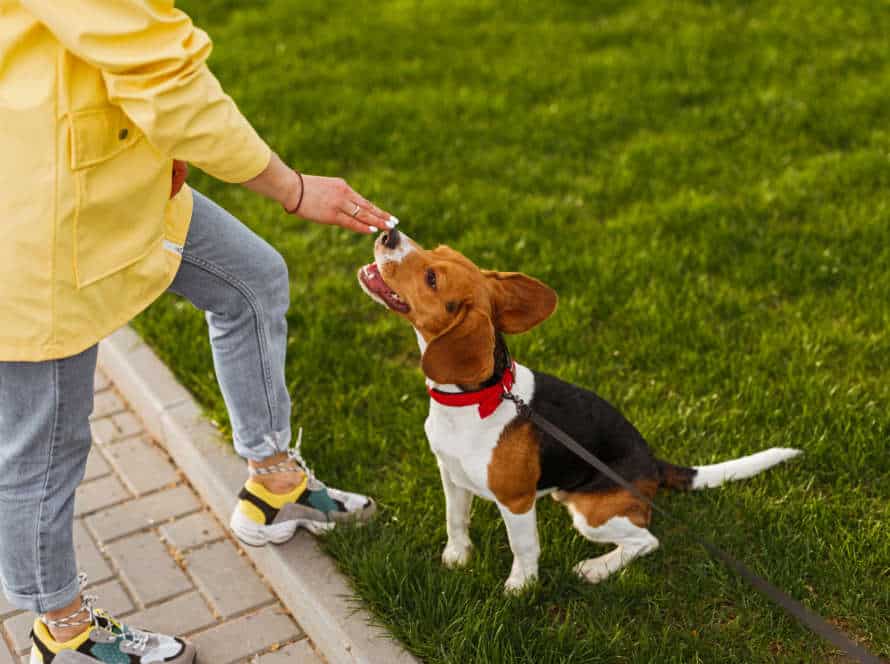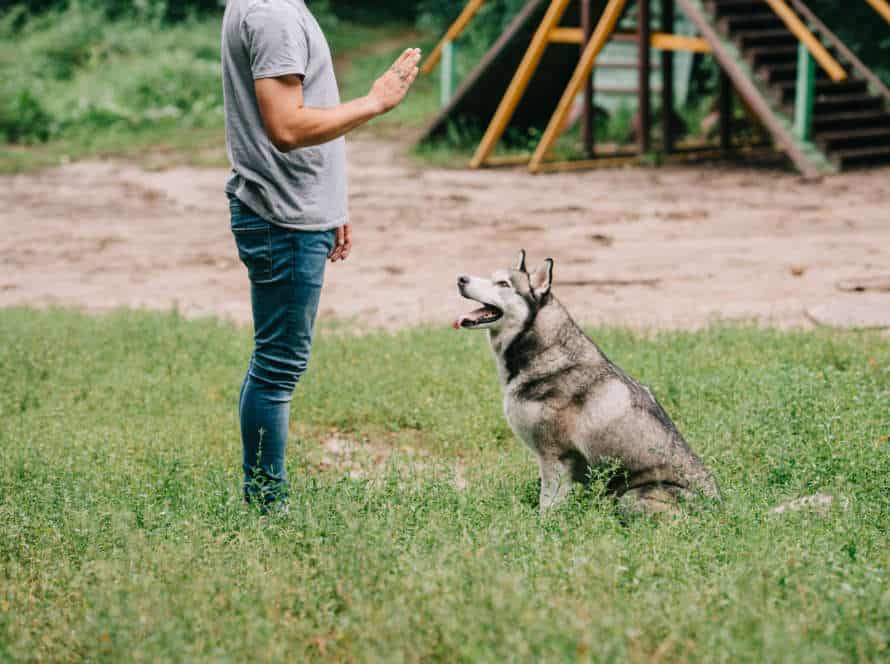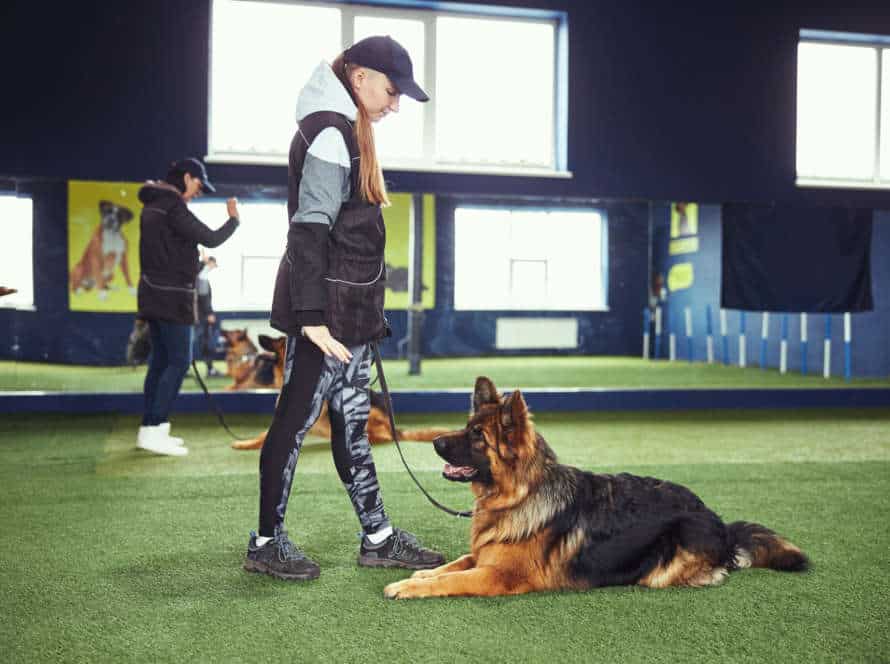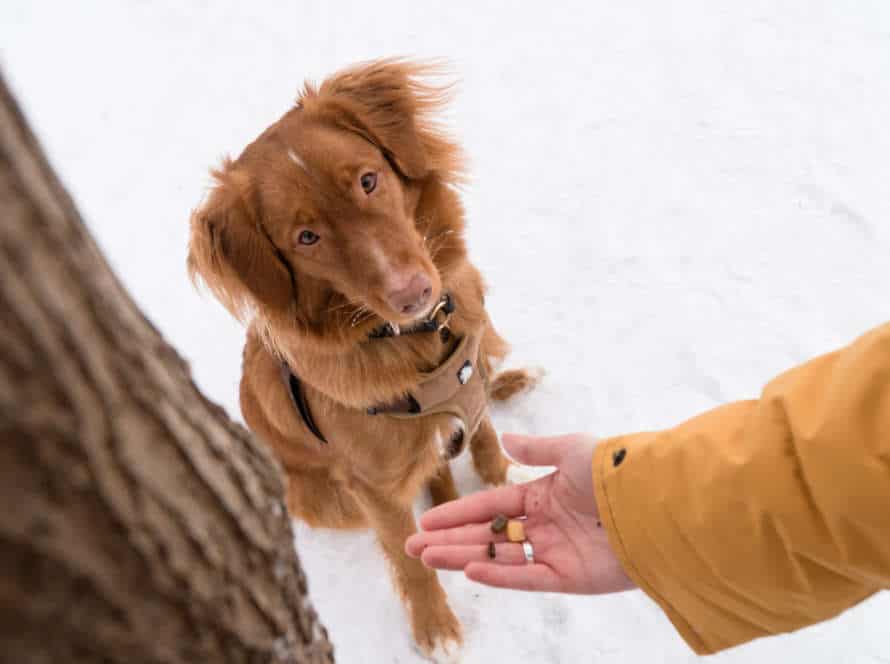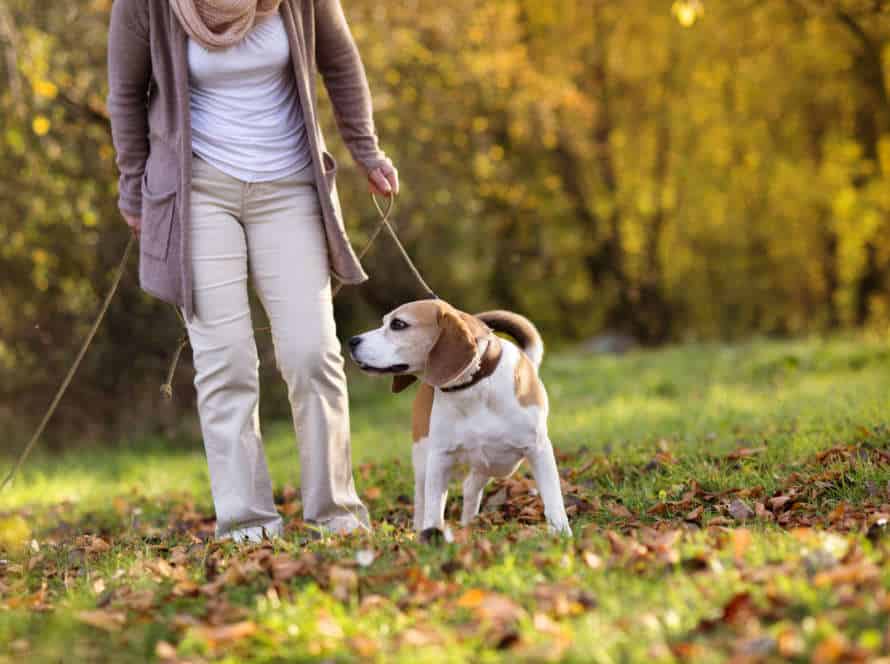How to Keep Puppy Biting Training Fun and Engaging for Your Puppy
Puppy biting is a natural behaviour. But, training your pup to stop is important for everyone’s safety. Training doesn’t have to be boring! Here’s how you can make it fun:
- Play games like chase and tug-of-war with soft toys or ropes.
- Use positive reinforcement techniques, such as a treat or verbal praise, when they stop biting on command.
- Exercise and playtime help release energy, so they’re more open to training.
- Give them chew toys for teething needs, instead of biting unwanted objects.
- Change up the training techniques to keep it interesting and challenging.
- Pro Tip: Consistency is key. Set a regular schedule to help them develop good habits.
Understanding Puppy Biting Behavior
Puppy biting is part of life! It’s natural for them to investigate the world by chomping and nipping. They’re learning how to engage with their environment. Knowing this helps us be patient and firm when training them. Here’s how to handle puppy biting better:
Normal biting behavior for puppies
Puppy biting is totally natural. It’s part of exploring the world and learning boundaries. It’s important to understand them to help them grow up nice. Here’s what you need to know:
- Puppies use their mouths to find out about things, but don’t know how strong they are.
- Saying “ouch” when they bite too hard teaches them to be gentle.
- Giving them toys to bite helps them know what’s allowed.
- Being consistent and patient is important for stopping bad biting behaviour.
- Keep training fun and reward good behaviour with positive reinforcement.
- With practice, your puppy will know how to play nicely.
Identifying problematic biting behavior
It’s essential to spot problem biting habits in puppies. Signs can be: forceful, frequent and intense; bleeding or bruising; towards vulnerable parts like face or hands.
Here are some ideas for enjoyable and interesting puppy biting training:
- Positively reinforce with treats and praise.
- Guide puppy biting to chew toys and suitable items.
- Don’t use physical punishment – fear and aggression can result.
- Be consistent and patient – puppies need time to learn.
- Lastly, socialize the pup with animals and people – to lessen fear or anxiety-led biting.
Causes of problematic biting behavior
Puppy biting is a normal thing, but it can turn bad if not handled. To keep the puppy’s biting under control and make training enjoyable, it is essential to comprehend the causes.
These are the typical ones:
- Teething: Like babies, puppies chew and bite when their teeth grow in, which is uncomfortable.
- Playfulness: Puppies are naturally fun-loving and use their mouths to interact with others, sometimes even biting.
- Fear and anxiety: If a puppy feels threatened or scared, it may bite as a defense.
- Handling and discipline: Bad handling and punishment can make puppies anxious and defensive, causing them to bite.
- Lack of socialization: Puppies that haven’t been socialized with other dogs or humans might bite due to fear or mistrust.
Comprehending these causes can help address the puppy’s biting behavior and make training pleasant for both you and your furry mate.
Importance of Positive Reinforcement Methods
Positive reinforcement is a must for training puppies to stop biting. Give treats and praises when they have desired behavior. This will help your pup repeat the behavior and strengthen the bond between you two.
The importance of positive reinforcement in pup training? Let’s talk about it!
Benefits of positive reinforcement
Positive reinforcement is an effective way to train your pup. It has many benefits! Here they are:
- Better communication. Positive reinforcement necessitates clear communication between you and your pup. This can help boost your connection.
- More confidence & trust. Rewarding your pup for good behavior builds their trust in you as their caretaker.
- Fun & engaging. Positive reinforcement involves treats, toys, and praise. This makes training more playful & enjoyable for your pup.
- Obedience & less bad behavior. Positive reinforcement can help your pup learn faster and more efficiently. Resulting in better obedience and less bad behavior.
When you use positive reinforcement in your pup’s training, you build a strong relationship with your furry friend. Plus, you teach them important life skills.
Why punishment-based methods don’t work
Punishment-based methods are not useful when training dogs and puppies. They use fear and intimidation, and this can make them anxious or aggressive. Positive reinforcement training uses treats, praise, and play to encourage good behavior and build trust. Here are some tips to make puppy biting training fun with positive reinforcement:
- Start with basic commands and behaviors like “sit” and “stay”.
- Use a friendly voice when giving commands.
- Reward good behavior with treats and praise.
- Don’t use physical punishment or yell.
- Be patient and consistent. Reward them for anything, no matter how small.
Pro Tip: Positive reinforcement creates a strong bond with your furry companion that lasts a long time.
Best treats for positive reinforcement
Positive reinforcement is great for puppy training! Treats can make it fun. Here are the best ones to use:
- Soft and chewy treats – ideal for young puppies.
- Jerky treats – high in protein, with a chewy texture.
- Freeze-dried treats – crunchy and come in lots of flavors.
- Cheese – many dogs love it!
When using treats for positive reinforcement, pick healthy ones that aren’t too high in calories. The goal is to reward good behavior, not to make your pup unhealthy. So, be mindful of the treats you give, and use them in moderation for a healthy and happy pup!
Simple Biting Training Techniques
Biting training is essential for puppy owners. You can use simple tactics to make this enjoyable for your pup. Patience and commitment will make the process positive for everyone. Try it!
Redirecting your puppy’s biting behavior
It’s natural for puppies to play and explore with their mouths. But, it’s important to redirect their biting habits – to stop them from causing harm. Here are some tips for successful biting training:
- Supply them with chew toys, and praise them when they use them.
- Redirect their attention with a toy or treat when they start to bite.
- When your puppy bites too hard or persistently, implement timeout procedures.
- Use a command like “No bite” or “Gentle” when your pup starts to bite.
- Be consistent. It may take weeks or months to redirect the biting behavior.
Pro Tip: Consistency and positive reinforcement are essential. Training sessions should be enjoyable and short. Be patient with your pup as they learn!
Teach your puppy the “leave it” command
“Leave it!” is a great command to teach your pup. Patience, persistence, and positive reinforcement will help them learn. Here’s how:
- Hold a treat in your closed hand.
- Let your puppy sniff your hand.
- When they start to nibble, say “leave it” and close your hand.
- Wait a few seconds. When they stop trying to get the treat, praise them and give them an appropriate toy or treat.
- Practice regularly. Gradually increase the duration of the “leave it” command, until they ignore the treat in your closed hand.
Incorporating toys and playtime into training
Incorporating toys and playtime can make training your pup more fun and engaging. Here are three techniques to consider: Tug of War, Fetch, and Chew Toys. With a rope toy, you can replace biting behavior with playing tug of war. Fetch is another way to redirect biting; throw a soft toy and reward good behavior with treats and praise. Provide chew toys to satisfy their urge to bite or chew on other things.
Puppy biting is natural and can be redirected with patience and consistency. The right toys and techniques will help your pup playbite appropriately and enjoyably.
Advanced Biting Training Techniques
Dog biting can be tricky to get rid of. But, you can make it fun and exciting for your pup with a few advanced biting training tips. These tips not only help them learn how to control their biting, but also build a stronger and healthier bond between you and your pup! Here are some advanced biting training tips you can use right away:
Gradual desensitization
Gradual desensitization is an advanced biting training technique. It helps make puppy training fun! Exposure to various stimuli like toys, treats and hands can trigger biting behavior. Here are the steps:
- Begin with a low-level stimulus – such as a toy or treat. Redirect your puppy’s attention if they try to bite.
- Increase the level of the stimulus – use an exciting toy or treat, or gently rub your pup’s fur.
- Yelp or use a cue word if your pup bites too hard. Immediately stop playtime.
- Reinforce good biting behavior with treats and praise. Resume playtime after a short break.
- Repeat the process until your pup knows how to control their biting.
Pro Tip: Supervise playtime and provide your pup with chew toys to redirect their biting.
Gentle physical restraint
Gently restraining your pup is key when training it to stop biting. Use physical signals to show boundaries without hurting the pup. To do this:
- When your pup bites or mouths you, put your hand over their muzzle and hold it there for a few seconds until they relax.
- Then, release the grip and give them a toy or treat as a reward.
- Do this repeatedly, reducing the pressure of your grip each time and giving rewards for good behaviour.
This method requires patience and consistency. Always praise and reward your pup for good behaviour, and avoid punishments that could hurt their training.
Incorporating socialization into training
Incorporating socialization into puppy biting training is vital. To ensure your pup learns proper interaction with other dogs and people in a positive setting, here are some advanced techniques:
- Schedule playdates with similar-sized, energetic pups or well-behaved adult dogs. Teach your puppy bite inhibition and the right way to play.
- Introduce your pup to new people, things, and places in a controlled way. Allow them to experience new sensations and explore different textures and sounds.
- Use treat-based positive reinforcement to reward good behavior during socialization and biting training.
Keep training sessions short and fun. Gradually increase difficulty and reward progress.
Dealing with Biting Special Cases
Training a puppy not to bite can be tricky. So, for hard cases, it’s important to take a whole approach and be inventive. Factors like breed, age and growth stage can influence how hard a biting case is. Knowing this can help you make a successful and effective puppy biting training plan.
Aggressive biting behavior
Aggressive biting behavior in puppies is a serious problem. It needs to be addressed and corrected in a safe, effective way.
To keep puppy biting training enjoyable and successful, here are some tips:
- Use positive reinforcement – treats, praise, and playtime.
- Avoid punishing or using negative reinforcement.
- Be consistent with rules and boundaries.
- Take time, effort and patience.
With the right attitude, you can help correct aggressive biting behavior and create a safe environment for everyone.
Biting due to fear or anxiety
Puppies may bite due to fear or anxiety. It’s important to know how to deal with such cases to stop future incidents and protect both pup and owner. Here are tips for fun and engaging puppy biting training:
- Use positive reinforcement, like clicker training or rewards-based training, to reward good behavior.
- Keep training sessions short and frequent, not long and rare.
- Provide chew toys, bones, and safe objects for pup to chew on, diverting biting away from people.
- Be consistent and patient in training. Give rewards and corrections promptly and calmly.
Biting is natural for puppies; it may take time and effort to train them out of it. With the right approach, it can become a fun training experience.
Biting that doesn’t respond to basic training techniques
Biting is natural for pups. But if basic training doesn’t work, special approaches are needed to make puppy biting training enjoyable. Here are some tips:
- Find triggers: See what causes the pup to bite, then show them an alternative activity.
- Use positive reinforcement: Reward good behavior – don’t punish the pup for biting.
- Give chew toys: Give toys suitable for their age and size.
- Get professional help: If biting persists, get help from a trainer or animal behaviorist.
Remember – puppy biting training should be fun! With patience and consistency, your pup will learn appropriate behavior.
Frequently Asked Questions
1. Why is it important to keep puppy biting training fun and engaging?
It is important to keep the training fun and engaging because puppies learn best when they are having fun. If training is boring or frustrating, it can cause the puppy to lose interest and become resistant to learning.
2. How can I make puppy biting training more fun?
There are several ways to make training more fun, including using toys and treats as rewards, playing games with your puppy, and using positive reinforcement techniques like clicker training.
3. What should I do if my puppy continues to bite despite training?
If your puppy continues to bite even after training, it is important to address the behavior as soon as possible. Consult with a professional dog trainer or behaviorist to determine the best course of action.
4. How often should I train my puppy to reduce biting?
Training should be consistent and frequent, but not too long in duration. Short sessions multiple times a day are more effective than one long training session.
5. Are there any negative consequences to using punishment in puppy training?
Using punishment in puppy training can have negative consequences, such as increasing fear and anxiety, damaging the relationship between the puppy and their owner, and even increasing the likelihood of aggressive behavior.
6. Can I still play with my puppy even after implementing biting training?
Yes, it is important to continue interacting and playing with your puppy even after training them not to bite. Playing with your puppy strengthens the bond between you and provides important socialization experiences for the puppy.

